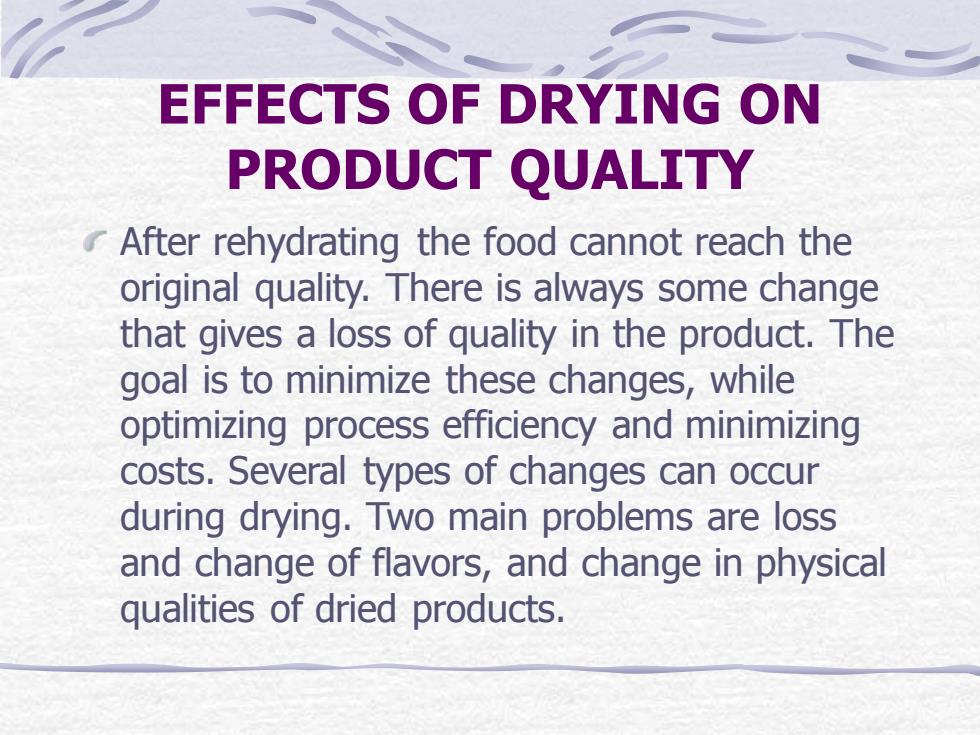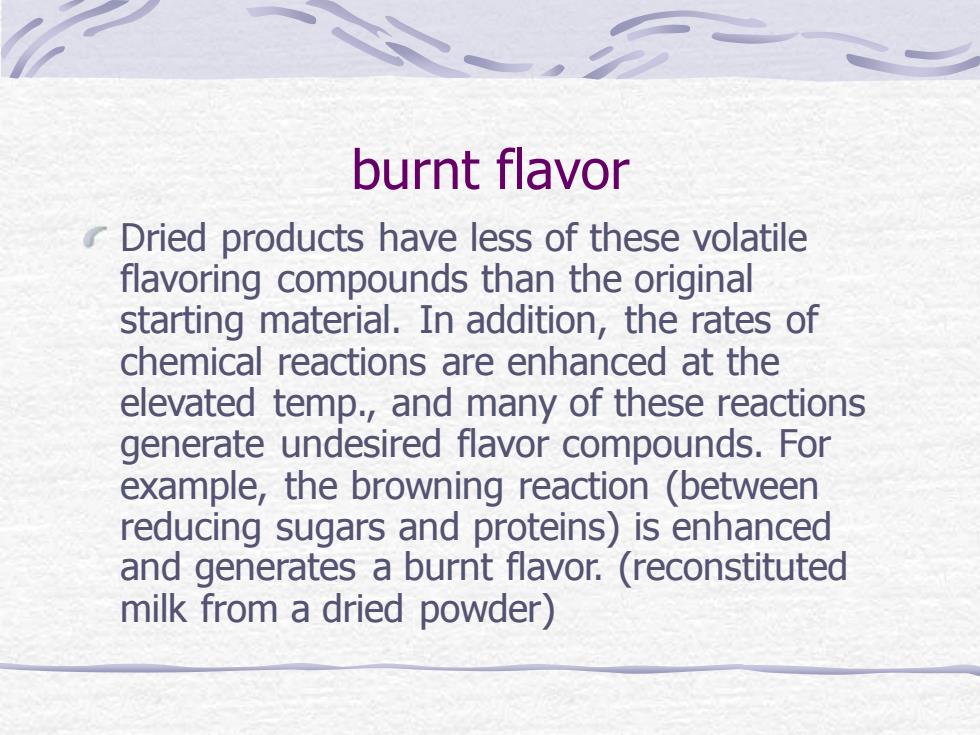
For example, powdered milk products remain dry and stable when maintained below the glass transition temperature. However, if the powder picks up moisture from the air or experiences elevated storage temperature, it may exceed the glass transition curve and be less stable. In this case, powdered milk would be likely to get sticky, and the powder would cake together
For example, powdered milk products remain dry and stable when maintained below the glass transition temperature. However, if the powder picks up moisture from the air or experiences elevated storage temperature, it may exceed the glass transition curve and be less stable. In this case, powdered milk would be likely to get sticky, and the powder would cake together

Dilute liquid Solubility curve Supersaturated solution aingeJedwal Freezing-point depression Ice Glass transition Glass Solute concentration 8.1 State diagram for a simple bi- figure nary mixture

EFFECTS OF DRYING ON PRODUCT QUALITY After rehydrating the food cannot reach the original quality. There is always some change that gives a loss of quality in the product. The goal is to minimize these changes, while optimizing process efficiency and minimizing costs. Several types of changes can occur during drying. Two main problems are loss and change of flavors, and change in physical qualities of dried products
EFFECTS OF DRYING ON PRODUCT QUALITY After rehydrating the food cannot reach the original quality. There is always some change that gives a loss of quality in the product. The goal is to minimize these changes, while optimizing process efficiency and minimizing costs. Several types of changes can occur during drying. Two main problems are loss and change of flavors, and change in physical qualities of dried products

Effect on flavor One problem with dried foods is that the flavor of the rehydrated product is not the same as that of the original. During drying, flavor compounds that are typically more volatile than water are removed in the drying process. The physical forces that cause water molecules to be removed from the food during drying also cause volatile compounds (alcohols, aldehydes, ketones, etc.) to be removed
Effect on flavor One problem with dried foods is that the flavor of the rehydrated product is not the same as that of the original. During drying, flavor compounds that are typically more volatile than water are removed in the drying process. The physical forces that cause water molecules to be removed from the food during drying also cause volatile compounds (alcohols, aldehydes, ketones, etc.) to be removed

burnt flavor Dried products have less of these volatile flavoring compounds than the original starting material. In addition, the rates of chemical reactions are enhanced at the elevated temp., and many of these reactions generate undesired flavor compounds. For example, the browning reaction (between reducing sugars and proteins) is enhanced and generates a burnt flavor. (reconstituted milk from a dried powder)
burnt flavor Dried products have less of these volatile flavoring compounds than the original starting material. In addition, the rates of chemical reactions are enhanced at the elevated temp., and many of these reactions generate undesired flavor compounds. For example, the browning reaction (between reducing sugars and proteins) is enhanced and generates a burnt flavor. (reconstituted milk from a dried powder)